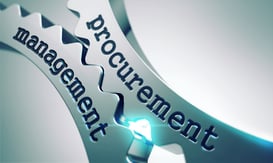
Procurement management is responsible for a significant portion of a company's bottom line. According to the Chartered Institute of Procurement & Supply, businesses can spend over two-thirds of their revenue on procurement. With so much riding on this division of the company, it is vital to get this part of your business right. The following tips are designed to help you create a procurement management solution that will help you get organized, increase efficiency, and improve relationships with your suppliers.
Best Practices for Procurement Management
- Make transparency a priority
Process your purchases and invoices using one ERP platform. This strategy ensures there will be open communication and accountability throughout all the stages of procurement for the buyer and seller alike.
Your procurement team will have access to the data analytics they need to take advantage of available discounts. They will also be able to avoid late payments (and the fees that accompany them), as well as double payments. You will easily manage accounts payable and your vendor management procedures from the same platform from any location.
- Build solid relationships with suppliers
You need to count on your suppliers to provide your business with stock at optimal pricing when you need it. The best approach is to develop good relationships with multiple suppliers to always have a backup source. With the recent spate of interruptions in the international supply chain, it is also good to have some local (or regional) suppliers available to shorten wait times.
- Automate your procurement process
Automating your procurement process saves your business valuable time as well as money. Automation minimizes repetitive processes in the business. When you implement automation processes, your company procurement team has more time to devote to other, more crucial tasks.
Purchase requisitions are one process that many companies should automate. They can get caught in the company's hierarchical structure and take up a lot of time getting approved. The approval cycle becomes more efficient by automating them, and your purchasing staff can accomplish more in less time.
Remember the days when contracts were stored in a filing cabinet? Your company may have digitized them to place them on the same hard drive. These methods still made it challenging to keep track of the specifics of each contract. Procurement automation allows you to organize all your contracts in one location to be accessed when needed.
- Establish clear policies for doing business with vendors
Your procurement team needs to have a clear direction to ensure products and services are correctly purchased. To accomplish this goal, the company needs to set clear policies. Here are some examples:
- The company will seek out at least three bids before deciding on doing business with a vendor for a product or a service over a set dollar amount.
- The company will only do business with qualified vendors the management team has already vetted.
These policies for vendor management will help to ensure that decisions about selecting vendors are based on available products or services, pricing, and performance only. Vendor selection must be performed ethically, with no favoritism shown to any particular vendor.
SYSPRO From PositiveVision: An ERP Designed To Facilitate Procurement Management
SYSPRO is a robust ERP solution with the capabilities to provide you with complete transparency throughout your supply chain. Developed specifically to meet the needs of manufacturers and distributors, SYSPRO optimizes your procurement process today and grows with you. Discover more about this powerful ERP by downloading this online brochure now.
Are you looking to automate procurement in a Sage 300 ERP environment? We can help. Please contact us if you have any questions or would like to schedule a demo.


 © 2019 PositiveVision • 219 E. Thorndale Ave. Roselle, IL 60172
© 2019 PositiveVision • 219 E. Thorndale Ave. Roselle, IL 60172